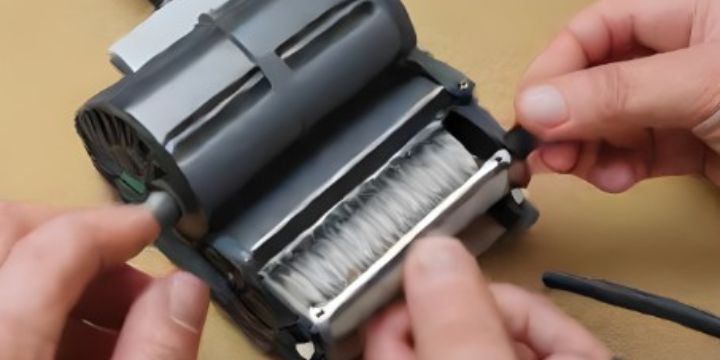A vacuum brush that slows down your cleaning routine can be frustrating.
With a few simple fixes, you can boost performance and get smoother results.
These smart vacuum brush tips help your vacuum pick up more dirt, improve airflow, and keep your floors looking fresh without extra effort.
7 Smart Vacuum Brush Fixes for Faster Clean
1. Clean Hair and Debris From the Brush Roll
Hair and threads wrapped around the brush roll can stop it from spinning well.
Snip away the buildup and pull it out gently.
A clean brush roll helps your vacuum pick up dust faster and reduces strain on the motor.
Regular maintenance keeps your vacuum running smoothly on all floor types.
2. Check the Brush Roll Bearings
If the brush feels stiff or noisy, the bearings may be clogged.
Remove the end caps and clear out dirt or tangled fibers.
Smooth, well-moving bearings help the vacuum glide better and lift more debris.
This quick fix can restore strong suction and extend the life of the vacuum’s moving parts.
3. Wash the Vacuum Brush Attachment
Brush attachments gather fine dust that blocks bristles.
Wash them with warm, soapy water and let them dry fully before use.
Clean bristles grab dirt more efficiently and prevent dust from spreading around.
This simple habit improves airflow and keeps the vacuum working at its best.
4. Adjust the Height Setting for the Floor Type
If the brush sits too high, it won’t reach debris.
If it sits too low, it drags and slows your cleaning.
Set the height based on your floor surface to help the bristles contact dirt properly.
This ensures smooth movement, strong pickup, and less time spent going over the same spot.
5. Replace a Worn Brush Roll
If the bristles are short or bent, the brush roll may not sweep dirt effectively.
Replacing it improves contact with carpets and hard floors.
A fresh brush roll helps restore powerful pickup and prevents uneven wear on your vacuum.
This simple upgrade often leads to a much faster clean.
6. Clear Clogs in the Brush Head
Dust and crumbs trapped inside the brush head block airflow.
Open the base plate and remove any buildup inside the nozzle and pathways.
A clear path allows suction to move freely, helping the vacuum shift dirt more quickly.
This fix also reduces pressure on the motor.
7. Tighten Loose Screws and Reattach the Brush Cover
A loose brush cover can cause rattling, poor rotation, or weak suction.
Tighten the screws and ensure the housing fits properly.
A secure brush head keeps everything aligned, helping the vacuum run efficiently.
This keeps cleaning smooth, steady, and faster with each use.
FAQs
1. How often should I clean my vacuum brush roll?
Every one to two weeks is ideal, especially if you have pets or long hair.
2. When should I replace the brush roll?
Most brush rolls last six months to a year, depending on use and floor type.
3. Why does my vacuum brush stop spinning?
It’s usually caused by tangled hair, a worn belt, clogged bearings, or a loose cover.
The Wind-Up
These vacuum brush fixes help you cut cleaning time while keeping your vacuum in top shape.
With a little routine care, you’ll get stronger suction and smoother performance.
For more home care tips and cleaning guides, browse related posts or sign up for updates.
